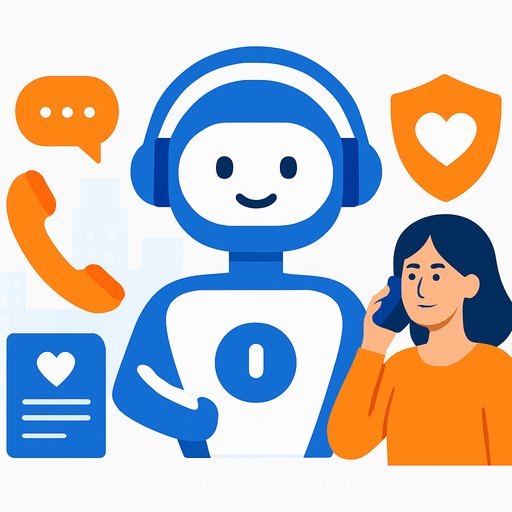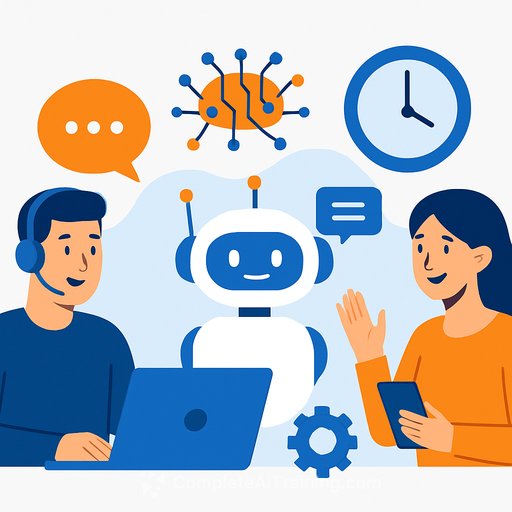AI-Powered Service: UX Is Now Your Trust Engine
By the end of 2025, most customer interactions will be AI-powered. That's efficient, but there's a catch: poor UX drains trust fast. The winners are already seeing 25% cost reductions and $3.50 ROI per $1 invested in AI-when the digital experience is optimized.
If you lead customer support, your job isn't just adopting AI. It's making the experience feel fast, clear, and reliable on the first tap. Mobile-first, conversion-focused frontends are now the standard for AI to feel credible.
Why Trust Breaks (And How To Prevent It)
AI can be smart and still feel unreliable if the interface lags, confuses, or looks unsafe. In one survey, 44% of companies reported negative outcomes from AI adoption-things like inaccuracies and security concerns. That's a UX problem as much as a tech problem.
Speed is a trust signal. A one-second delay can drop conversions by 7%. If 62% of users prefer chatbots over waiting in a queue, slow interfaces turn that preference into frustration.
- Proof of risk: McKinsey's 2024 AI survey highlights real downsides from poor implementation.
- Proof of speed impact: Akamai research shows small delays hurt conversions.
What's Changing in Support: The Visual Phase
Customer service is moving beyond chat. AI can now guide users through on-screen steps or take actions inside the interface. These "visual AI guidance" flows reduce friction, but they depend on performance and clarity. If your site is slow or cluttered, the AI looks broken-even when it's not.
Agencies focused on performance and localization (not just aesthetics) are helping brands ship faster interfaces that scale across markets. Treat UX as the foundation of AI credibility: speed, accessibility, and simple layouts.
"When the experience feels natural, people stop thinking about the technology and just start using it."
Make AI Support Feel Reliable: A Practical Playbook
1) Prioritize Speed As a Signal
- Set a clear budget for performance work. It pays back in conversion and CSAT.
- Aim for sub-2.5s Largest Contentful Paint on 4G and under 200ms server response time.
- Lazy-load non-critical components; defer scripts; compress media; use a global CDN.
2) Design for Effortless Clarity
- Short, direct copy. One clear primary action per screen.
- Visible progress states: "Thinking…", "Done", "Escalated to human."
- Use guardrails: confirmation steps for risky actions, undo states, simple error recovery.
3) Humanize Microinteractions
- Conversational tone without fluff. Acknowledge intent. Mirror user language.
- Micro-animations and system feedback that show the AI is working, not stuck.
- Graceful handoff to a person with context attached-no retyping.
4) Make Accessibility Non-Negotiable
- Keyboard navigation and screen reader support. Clear focus states.
- Contrast ratios that pass WCAG. Large tap targets for mobile.
- Localize copy and flows for each market. Avoid culture-specific jargon in prompts.
5) Test With Real Behavior Data
- Instrument sessions and heatmaps on key AI flows (onboarding, password resets, refunds, order tracking).
- Run A/B tests on response timing, copy clarity, and handoff thresholds.
- Ship weekly improvements. Small wins compound.
Metrics That Actually Predict Trust
- Speed: LCP, TTFB, time-to-first-response in chat.
- Containment: % of conversations resolved without human escalation (with CSAT above target).
- Resolution Quality: First Contact Resolution, repeat contact rate within 7 days.
- Drop-off Signals: Bounce on help pages, abandonment during AI flows.
- Handoff Health: Transfer rate, time-to-human, context pass-through success.
- Trust Pulse: CSAT/NPS split by AI vs human, top 5 failure intents by volume.
Team Ops: How Support Leaders Make This Real
- Create a bot-to-human playbook: escalation rules, SLAs, and tone guidelines.
- Give agents visibility into AI reasoning where possible to speed resolution.
- Localize intents, prompts, and flows for key regions (Southeast Asia, China, EU) and device types.
- Bundle support, design, and engineering in one weekly review of metrics and recordings.
- Retire low-value features that slow the interface. Simplicity beats feature bloat.
The Market Is Moving
The AI customer service market is projected to reach $47.82B by 2030. The best results will go to teams that integrate AI with fast UX and localized design. Mobile-first experiences are the new baseline-anything slower erodes trust.
The Real Test of AI
The smartest AI is invisible. The moment your interface hesitates, trust evaporates. If you're investing in automation, start with one question: how fast does your website load?
If your team is building skills for AI-enabled support, explore focused learning paths here: AI courses by job.
Your membership also unlocks:






